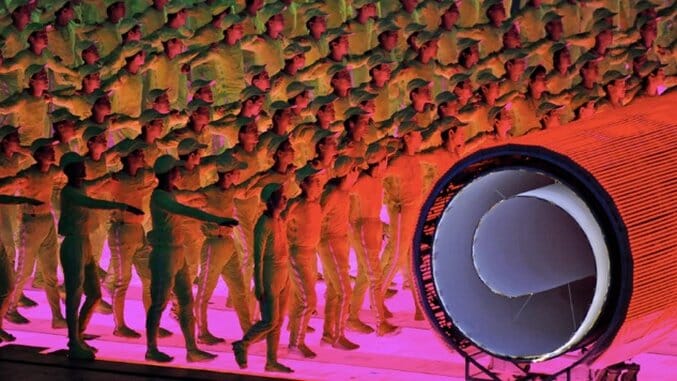From Alabama to Colombia: Pickpocketed Peace

Scientists say our universe consists mostly of a mysterious substance known as dark matter. The stuff doesn’t shine or even react to light, but it has gravity and may make up 90 percent of the universe.
I wonder if dark karma exists too?
Last week, on a pretty October afternoon, I stepped from an Uber in the city center of Bogotá onto a wild scene not too far removed from Berkeley in the 1960s. Several hundred people, many students from downtown universities, crowded a park beside the Planetario Distrital, the city planetarium. In small groups, the assembly prepared for a march, stretching out white sheets with hand-lettered messages: “Ahora la paz!” (Peace now!) and “Mujeres por la paz!” (Women for peace!)—as they took photos (lots of selfies on smart phones) and documented a moment of national history.
The Gran Marcha Colombia Pacífica—the Great Colombian Peace March—took place simultaneously in 10 cities. Tens of thousands of Colombians turned out to contribute support to an imperiled peace agreement between the government and the rebel group FARC (the Revolutionary Armed Forces of Colombia). The peace accord would end a civil war that, like a low-grade fever, has drained Colombia for decades. Imagine an armed conflict in the United States that claimed just under 100 lives every week for 52 years. In all, 220,000 Colombians have died and 5 million have been displaced.
Most Colombian families have a war story. Adela, my fiancée, remembers ignoring her father’s warnings about visiting a nearby town. On a day drive, she confronted a roadblock by rebel soldiers. They forced people from their cars and spray-painted fenders and hoods. Panic struck Adela. Her family, Castro, was known in Valledupar, her home city near the Venezuelan border. The FARC used kidnappings of prominent citizens as fund-raisers, supplementing illicit sales of coca to finance its insurrection.
As Adela waited in terror, someone fired shots. She heard shouting. Somehow, like cavalry riding up in a Hollywood western, government soldiers appeared. The rebels vanished into the wild countryside to fight another day and a chastened young woman made it home safely.
The latest efforts to end the Western Hemisphere’s last and longest-running war began more than four years ago with talks between the government of Juan Manuel Santos, Colombia’s president, and FARC leaders. Promising signs included a cease-fire and an accord on paper that would reintegrate rebels into society and the nation’s political processes.
Colombians felt peace in the air until an October 2 plebiscite. By 50.21% to 49.78%—a difference of just .4%—Colombians voted NO to peace.
It shocked nearly everyone.
The defeat left huge questions about Santos’s power as head of a nation with a huge fiscal deficit and the challenge of determining Colombia’s place between yesterday’s third world and tomorrow’s world without borders.
Then, just five days after the vote, Santos received the Nobel Peace Prize for his efforts to end the war. Suddenly his stature and fading prospects for peace got a shot in the arm. The president has since met with his political opponents, and talks to hear their demands are ongoing. The Gran Marchas in the streets of Colombia’s biggest cities took place to boost Santos’s efforts, to give peace a chance.
-

-

-

-

-

-

-

-

-

-

-

-

-

-

-

-

-

-

-

-

-

-

-

-

-

-

-

-

-

-

-

-

-

-

-

-

-

-

-

-








































